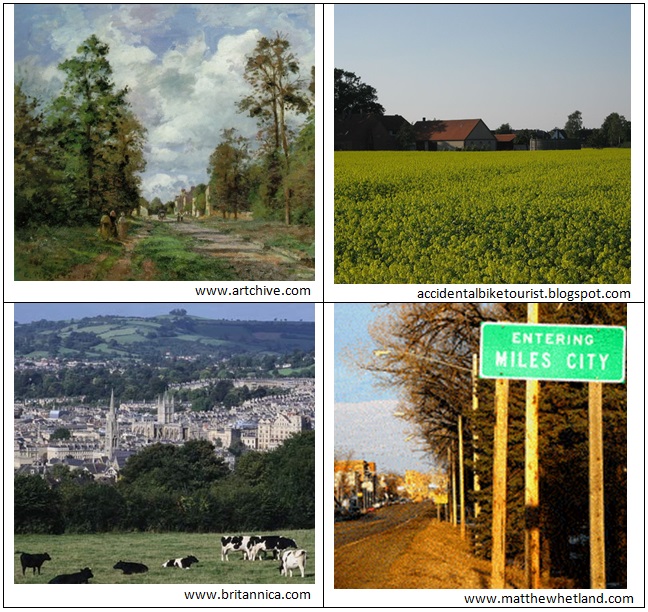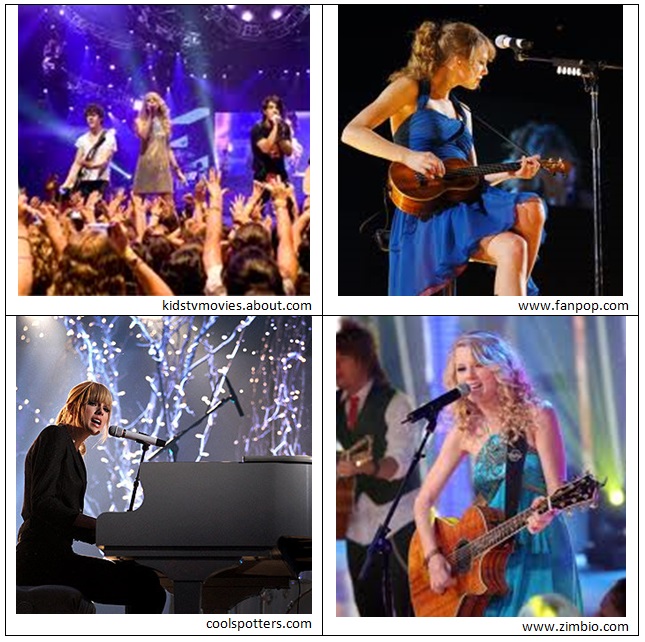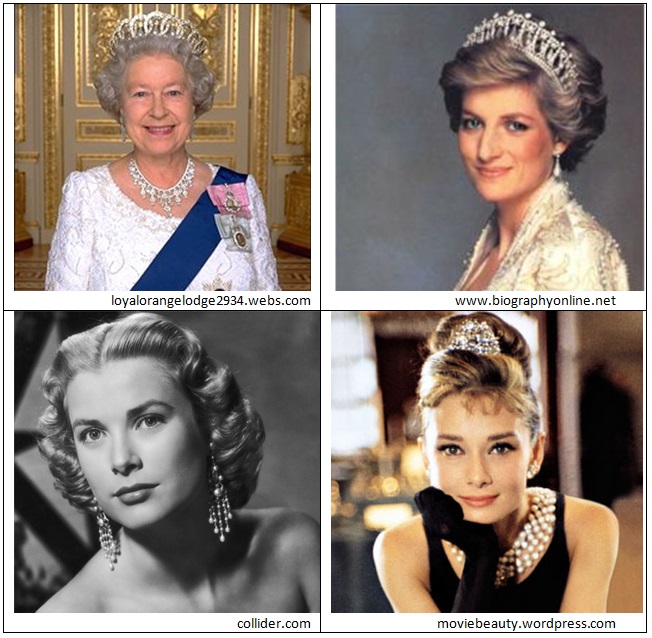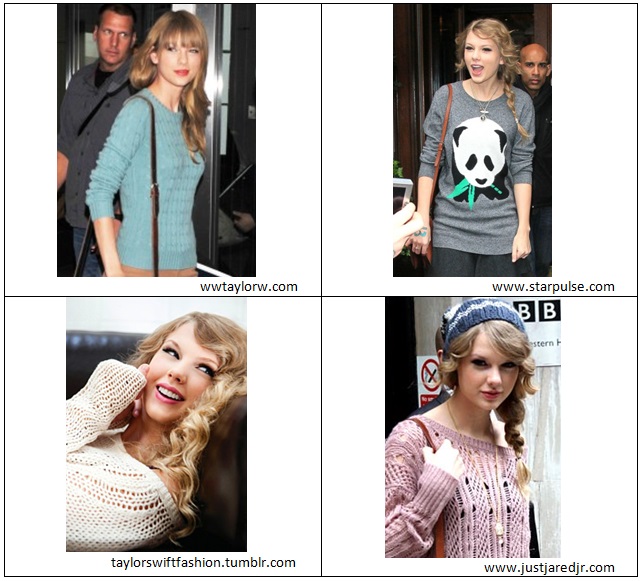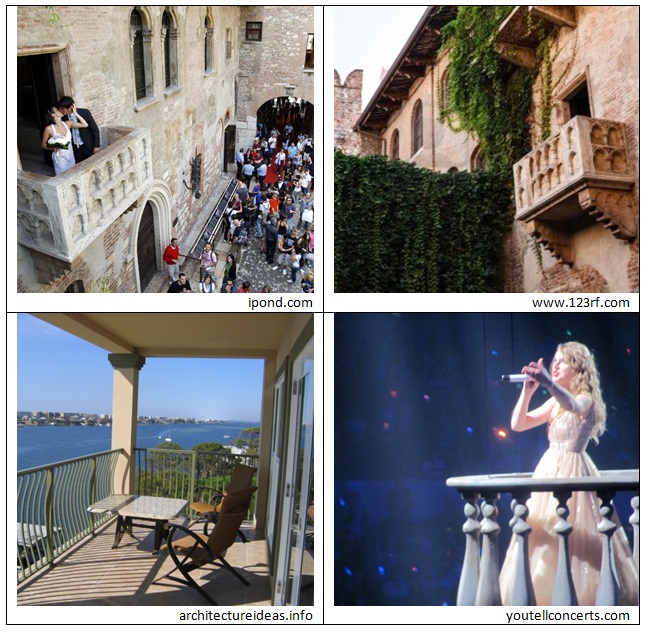
Taylor Alison Swift (born December 13, 1989) is an American singer-songwriter. She has sold over 26 million albums and 75 million digital downloads worldwide. As a songwriter, she has been honored by the Nashville Songwriters Association and the Songwriters Hall of Fame.
Swift's other achievements include seven Grammy Awards, eleven American Music Awards, seven Country Music Association Awards and six Academy of Country Music Awards.
In addition to her music career, Swift has appeared as an actress in the crime drama CSI (2009), the ensemble comedy Valentine's Day (2010) and the animated film The Lorax (2012). As a philanthropist, Swift supports arts education, children's literacy, natural disaster relief, LGBT anti-discrimination efforts, and charities for sick children.
Reprinted with permission from the Wikipedia.org
Familiarize yourself with the following notes on cultural information and contextual vocabulary in the video.
| 1. | What can the ‘gift’ do for you? (you may select more than one option) | |||
| 1 | a. | Swift has been on Letterman’s show before. | ||
| 1 | b. | Swift’s age. | ||
| 1 | c. | How Swift writes her new CD. | ||
| 0 | d. | Swift’s first boyfriend. | ||
| 1 | e. | Swift body or perfume scent. | ||
| 0 | f. | Swift’s favorite smell. | ||
| 1 | g. | Swift’s tours in other countries. | ||
| 1 | h. | How Swift adapts to foreign cultures. | ||
| 1 | i. | Letterman doubts that Swift could speak only Japanese throughout a concert. | ||
| 0 | j. | Swift doesn’t like it when her fans shout. | ||
| 1 | k. | How Swift spends her free time. | ||
| 0 | l. | Swift’s first Christmas tree. | ||
| 1 | m. | The place where Swift grew up. | ||
| 1 | n. | Swift’s feeling towards Christmas. | ||
| 0 | o. | Letterman’s stroke. | ||
| 1. | How old was Swift when she won the Grammy for the Album of the Year? | ||
| 18 |
Sorry!
| ||
| 20 |
Correct!
| ||
| 22 |
Sorry!
| ||
| Not provided |
Sorry!
| ||
| 2. | When did Swift win the Grammy for the album of the year? | ||
| A couple of years before this interview. |
Sorry!
| ||
| The same year when she did this interview |
Correct!
| ||
| When she was 18. |
Sorry!
| ||
| 3. | How long did it take for Swift to write enough stuff to put on a CD? | ||
| a couple of months |
Sorry!
| ||
| two years |
Correct!
| ||
| twelve years |
Sorry!
| ||
| two months |
Sorry!
| ||
| 4. | How does Swift write her music? | ||
| Through reminiscing the past. |
Sorry!
| ||
| By discussing with her co-writers. |
Sorry! | ||
| In real time as feelings and events unfold around her. |
Correct! | ||
| 5. | Letterman: “I wonder sometimes if that would be a deterrent… maybe a guy would say, ’mmm... I just don't want a song written about me...maybe I'll... (back off)’” What is a ‘deterrent’ in this context? | ||
| distraction |
Sorry!
| ||
| delusion |
Sorry! | ||
| discouragement |
Correct! | ||
| determination |
Sorry!
| ||
| 6. | Letterman: “Now, please don't take this the wrong way, you smell like expensive wood.” i. “don’t take this the wrong way” – What do you think this phrase means? | ||
| don’t get lost here |
Sorry!
| ||
| don’t take me wrong |
Correct! | ||
| don’t overreact to this |
Sorry!
| ||
| ii. Why do you think Letterman says this before suggesting that Swift smells like expensive wood? | |||
| to test Swift’s response |
Sorry!
| ||
| to prevent upsetting or offending Swift |
Correct! | ||
| to get Swift’s mindset ready for what he’s going to say |
Sorry!
| ||
| 7. | Swift: “Umm, we travel all over the world and this is actually the first international release where the CD is released everywhere, and so I’ve been all over the place recently...” ‘all over the place’ means… | ||
| many countries, or all around |
Correct! | ||
| very popular |
Sorry! | ||
| over-excited |
Sorry!
| ||
| 8. | According to Swift, she tried to adapt to a foreign country by learning a few phrases in the new language and sometimes she… | ||
| faked mistakes |
Sorry!
| ||
| failed miserably |
Correct!
| ||
| found it missleading |
Sorry!
| ||
| 9. | Letterman exclaims “No, you don’t!” in response to Swift’s claim that she speaks Japanese throughout the show. Pick the equivalent of that phrase in this context from the following options: | ||
| You’re lying to me. |
Sorry!
| ||
| Really?! |
Correct!
| ||
| Stop pretending! |
Sorry!
| ||
| 10. | Swift: “I've had this nature phase thing right now. I really like walking in nature and being outside. I'm a very seasonal person right now. I love fall, and I love the fact that it's about to be winter!” What do you think “I’ve had this nature phase thing right now” means? | ||
| I have become the owner of several things related to nature. |
Sorry!
| ||
| I have decided to commit myself to outdoor activities more often. |
Sorry! | ||
| I have recently, and probably temporarily, acquired a passion for nature. |
Correct! | ||
| 11. | Where did Swift grow up? | ||
| State of New York |
Sorry!
| ||
| a Christmas tree farm |
Correct!
| ||
| a fruit farm |
Sorry!
| ||
| 12. | Does Swift find her Japanese fans are more reserved than fans from other parts of the world? | ||
| Yes |
Sorry!
| ||
| No |
Correct!
| ||
| 13. | Swift: “You can be like, really obnoxious-Christmas sweater-ginger-bread-cookie-girl.” Swift uses ginger bread cookies and Christmas sweaters to illustrate a person who | ||
| is very sweet and young |
Sorry!
| ||
| is fanatical with Christmas |
Correct!
| ||
| loves eating ginger bread cookies and wearing Christmas sweaters |
Sorry!
| ||
| 14. | Letterman: “There's something going on here and I'm right about it, right? Ok! Yeah! There you go! Yeah.” What do you think the phrase “There you go!” means in this context? | ||
| Good job! |
Sorry!
| ||
| See? I was right. |
Correct!
| ||
| Here you are. |
Sorry!
| ||
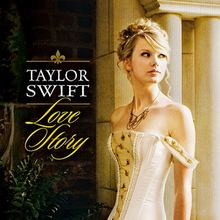 "Love Story" was written about a romantic interest of Swift's who was not popular among Swift's family and friends. Swift related this situation to the plot of William Shakespeare's Romeo and Juliet (1597) and used it as a source of inspiration to compose the song. The song was a success with critics complimenting Swift's writing style and the song's plot. It was also a commercial success, selling over 8 million copies worldwide, therefore establishing itself among the best-selling singles of all time.
"Love Story" was written about a romantic interest of Swift's who was not popular among Swift's family and friends. Swift related this situation to the plot of William Shakespeare's Romeo and Juliet (1597) and used it as a source of inspiration to compose the song. The song was a success with critics complimenting Swift's writing style and the song's plot. It was also a commercial success, selling over 8 million copies worldwide, therefore establishing itself among the best-selling singles of all time.
Reprinted with permission from the Wikipedia.org
Listen to the song on http://youtu.be/8xg3vE8Ie_E or http://youtu.be/2CZQZohbZcQ, and then answer the following questions in regards to this story in the song.
| 1. | Which of the following characters are mentioned in the song? | |||
| 1 | a. | Juliet | ||
| 0 | b. | friends | ||
| 1 | c. | the father | ||
| 1 | d. | Romeo | ||
| 0 | e. | the stepfather | ||
| 0 | f. | the mother | ||
| 2. | What are some of the locations mentioned in the story? | |||
| 1 | a. | party | ||
| 0 | b. | palace | ||
| 0 | c. | college | ||
| 1 | d. | balcony | ||
| 1 | e. | garden | ||
| 0 | f. | ballroom | ||
| 1 | f. | outskirts of town | ||
| 1 | f. | staircase | ||
| 3. | What is the narrative point of view in this story? | ||
| alternating person view |
Sorry!
| ||
| first-person view |
Correct!
| ||
| third-person view |
Sorry!
| ||
| 4. | What is the narrative tense in this story? | ||
| past |
Sorry!
| ||
| present |
Correct!
| ||
| future |
Sorry!
| ||
| 5. | How is the story set up in the beginning? | ||
| The girl made her way to the boy through the crowd in a party. |
Sorry!
| ||
| The girl met the boy of her dreams in a party. |
Correct!
| ||
| The girl said hello to the boy of her dreams in a party. |
Sorry!
| ||
| 6. | What was the crisis that is presented in the middle of the song? | ||
| The boy left the girl despite her crying and begging him not to go. |
Sorry!
| ||
| The girl’s father did not permit them to be together. |
Correct!
| ||
| The girl couldn’t find the boy in the garden. |
Sorry!
| ||
| 7. | What was the initial plan to resolve the crisis described in question 6? | ||
| They planned to open up to their parents about their relationship. |
Sorry!
| ||
| They wanted to keep their relationship a secret. |
Correct!
| ||
| They planned to run away together. |
Sorry!
| ||
| 8. | How is the story brought to a close? | ||
| The boy convinced the girl’s father to let him marry her. |
Sorry!
| ||
| The boy and the girl ran away together and got married. |
Correct!
| ||
| The girl kept waiting for the boy but he never came. |
Sorry!
| ||
Each of the following questions provides four pictures that have one word (that appeared in Part 1- 2) in common between them. Use the provided letters to spell the one word which fits all the pictures. you do not need to use all of the letters.
